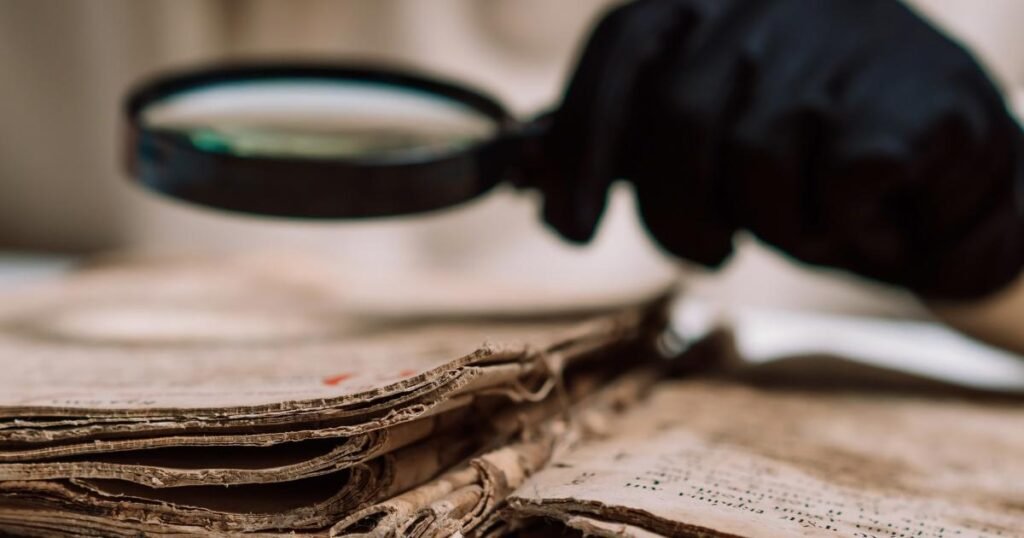In the vast field of forensic science, two of the most compelling and frequently used branches are Questioned Document Examination (QDE) and Fingerprint Analysis. These disciplines are crucial in crime scene investigations, fraud detection, civil disputes, and criminal trials. Both serve the common goal of identifying authenticity and linking evidence to suspects, making them indispensable tools in the pursuit of justice.
What Are Questioned Documents?
A questioned document refers to any document whose origin, authenticity, or authorship is in doubt. These can include wills, contracts, cheques, threatening letters, anonymous notes, or even historical manuscripts. In India and across the globe, questioned document examination plays a pivotal role in resolving legal and criminal cases.
The field involves scrutinizing handwriting, ink, paper, and printing methods to determine whether a document has been altered, forged, or counterfeited. Techniques like microscopic analysis, infrared spectroscopy, electrostatic detection (ESDA), and digital enhancement are used by document examiners to uncover the truth hidden in paper and ink.
Key Areas of Document Examination
- Handwriting and Signature Verification
Experts compare known samples with questioned writing to identify forgeries or confirm authorship. - Alteration Detection
Documents may be tampered with using erasures, additions, or overwriting. Techniques such as UV light or chemical testing can expose these changes. - Ink and Paper Analysis
Chemical analysis helps determine the type or age of ink and paper, which can disprove a document’s claimed date. - Printing and Typewriting Examination
This involves identifying the printer or typewriter used in document preparation, which can link or disassociate suspects.
Fingerprints: The Unchangeable Identity
While documents can be forged or altered, Questioned Documents and Finger Prints offer a level of individualization unmatched by any other biometric trait. Formed during fetal development and remaining unchanged throughout life, fingerprints are unique to each person — even in identical twins.
In India, fingerprint analysis has been widely used in both criminal and civil investigations, dating back to its adoption by British authorities in colonial times.
Types of Fingerprints
- Latent Prints
Invisible to the naked eye, they are made by natural oils and sweat on skin. These require development techniques like dusting, fuming, or chemical reagents. - Patent Prints
Visible prints made when fingers are coated with substances like blood, ink, or dirt. - Plastic Prints
Impressions left on soft surfaces such as wax, soap, or clay.
Fingerprint Collection and Analysis
Fingerprint experts use various techniques to collect and analyze prints:
- Dusting and lifting with powders and tapes.
- Cyanoacrylate (superglue) fuming for non-porous surfaces.
- Ninhydrin and silver nitrate on porous materials like paper.
- Automated Fingerprint Identification Systems (AFIS) to match prints against national databases.
The analysis includes ridge pattern comparison (loops, whorls, arches), minutiae points (bifurcations, ridge endings), and spatial arrangements, which together establish a match or eliminate suspects.
Legal Significance in India
In India, the Bureau of Police Research and Development (BPRD) and the Central Forensic Science Laboratory (CFSL) play pivotal roles in developing and standardizing questioned document and fingerprint techniques. The Indian Evidence Act, 1872, allows both types of evidence to be admissible in court when examined by certified forensic experts.
Recent years have seen a rise in cyber forgery, passport fraud, and fake educational certificates, where QDE has become increasingly vital. Fingerprints are now integral to Aadhaar-based authentication, land records, and banking systems.
Challenges and Advancements
Despite their proven utility, both fields face challenges:
- Forgery techniques are becoming more sophisticated with digital tools.
- Partial or smudged fingerprints often complicate analysis.
- Over-reliance on human interpretation can lead to errors.
To counter these issues, the forensic community is embracing AI-based handwriting recognition, 3D fingerprint scanning, and blockchain-backed document verification.
Conclusion
Questioned Document Examination and Fingerprint Analysis are two sides of the same coin in forensic science — one revealing what’s written, the other who touched it. Their combined power provides robust evidence that can affirm identities, establish timelines, and uncover deceit. As crime evolves, so too do the techniques used to expose it, and India is steadily advancing its capabilities in both fields. Fondelco continues to support awareness and technological progress in these forensic pillars for a more secure and just society.










































